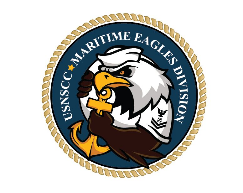Sea Cadet Units
Cadets meet or “drill” at their local unit weekly or monthly throughout the year. A unit is structured along military lines and is headed by a Commanding Officer. Units may drill on military bases, at reserve centers, local schools, or community centers.
Sea Cadet Units are organized as divisions, squadrons, or battalions. Divisions closely reflect the surface Navy, while squadrons are geared toward the field of naval aviation, and battalions meanwhile reflect Navy construction battalions (Seabees).
Whether a division, squadron, or battalion, the local unit has one main purpose, and that is to foster team work, camaraderie and an understanding of the military command structure.
Cadets are instructed by both Sea Cadet Officers and senior cadets through classroom and applied instruction in subjects such as basic seamanship, military drill, and leadership. And most Sea Cadet regions throughout the country hold weekend competitions where units compete with each other to test their seamanship and military skills.
Local units will often participate in community events such as parades and fairs. They may also tour Navy and Coast Guard ships and shore stations. And participate in community service such as working in Veterans’ Hospitals and organizing clothing and food drives.
Training and Advancement
Sea Cadet training consists of Navy Non-Resident Training Courses (NRTC), training evolutions (away from local units), shipboard training, and training arranged locally by units.
All new cadets enter the program at the rate of Seaman Recruit. In order for cadets to move up through the ranks they must complete the following: the NRTC Correspondence Course for that rate, one training evolution, and depending on the rate, the Navy’s Military Leadership exam for that rate. NRTC’s cover basic military and naval subjects such as naval history, seamanship, leadership, and ship/aircraft familiarization. The cadet rate structure parallels that of the Navy and Coast Guard’s enlisted rate structure, with Chief Petty Officer being the highest rate a cadet can achieve.
Training takes place mostly during summer months and occasionally during winter and spring break periods and are generally one to two week evolutions. The first training evolution for all cadets is NSCC Recruit Training, better known as boot camp. It is a scaled down version of the Navy’s boot camp. For approximately two-weeks cadets are instructed by active and reserve military personnel and Sea Cadet officers in military drill and discipline, physical fitness, seamanship, shipboard safety, first aid, naval history, and leadership.
After cadets have successfully completed boot camp, they can then participate in advanced training. Sea Cadet advanced training currently consists of the following:
- TRAINING SCHOOLS
- AIRMAN TRAINING (BASIC & ADVANCED)
- AIR TRAFFIC CONTROL TRAINING
- FAA GROUND SCHOOL
- CULINARY ARTS TRAINING
- MEDICAL TRAINING (GENERAL, FIELD, SURGICAL & DENTAL TECH)
- FIREFIGHTING TRAINING
- PHOTO JOURNALISM TRAINING
- CEREMONIAL GUARD
- SUBMARINE SEMINAR
- MARKSMANSHIP TRAINING
- CONSTRUCTION BATTALION (SEABEE) TRAINING (BASIC & ADVANCED)
- MINE WARFARE OPERATIONS TRAINING
- MUSIC SCHOOL
